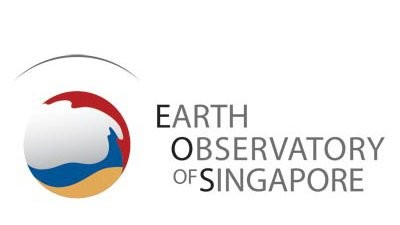Partners

ETH Zurich and Swiss Seismological Service
ETH Zurich is a leading international university for technology and the natural sciences and regularly appears at the top of international rankings as one of the best universities in the world. Founded in 1855, ETH Zurich today has more than 20,000 students from about 120 countries, including 4’425 doctoral students. Relevant to GEOTWINS, ETH Zurich has been ranked no. 1 in Geology, Geophysics, and Earth & Marine Sciences by Q.S World University Ranking from 2021 to 2025.
The Swiss Seismological Service (SED) at ETH Zurich coordinates this project and is the federal office and major research institution responsible for earthquake monitoring, alerting, hazard and risk assessment. With a staff of more than 80 people, the SED covers a wide range of expertise and has been and is a leading partner in multiple European and international projects in the field of seismology (e.g., RISE, ERC Synergy project FEAR), induced seismicity (e.g., DEEP-Geothermica), risk and multi-risk (e.g., NERA, EFEHR), and has a leading role in the design and development of next-generation seismological hazard and risk assessment as well as data sharing technology. SED is also a core partner in the Bedretto and Mont Terri underground research labs. In the context of GEOTWINS, SED will also subcontract two emerging spin-off companies: Mignan Risk Analytics led by Dr. Arnaud Mignan and Sustain, led by Dr. Edoardo Pezzulli.
Geo Energie Suisse (GES)
Geo-Energie Suisse (GES) was founded in 2010 by seven Swiss city and cantonal utilities as the Swiss Centre of Competence for Deep Geothermal Energy (DGE) for power and heat production. The primary objective of GES is to implement DGE pilot projects - primarily focusing on multi-stage EGS. Currently, GES employs twenty-one specialists in geology, geophysics, seismology, and environmental, reservoir, and drilling engineering. GES is deeply involved in the UTAH FORGE project, collaborating closely with Fervo Energy and the operator of the Haute-Sorne EGS project.
Mondaic AG
Mondaic provides professional and high-performance software and consulting for full-waveform modeling and inversion (FWI). Spun off from ETH in 2018, its flagship software suite “Salvus” drives FWI across the scales, with applications ranging from ultrasound tomography to global seismology. Mondaic has worked with both academic and industry partners on the reservoir scale to develop solutions for the seismic modeling and monitoring of geothermal fields. In particular, Salvus has been applied within a geothermal context to both the Utah FORGE project and the Brady’s geothermal field, and the team brings experience with working with both nodal and DAS data.

Fraunhofer Research Institution for Energy Infrastructures and Geothermal Energy (IEG)
The Fraunhofer Research Institution for Energy Infrastructures and Geothermal Energy (IEG) is a research institution of the Fraunhofer Society, Europe’s largest organization for applied research and development. The IEG was founded in 2020 to develop expertise on all aspects of deep geothermal energy. The Reservoir Geophysics group has recently been involved in several ongoing (e.g., SIEGFRIED-BMWK) and completed research projects (e.g., DEEP-Geothermica, GeMex-Horizon 2020, and DGE-Rollout -Interreg NW Europe).
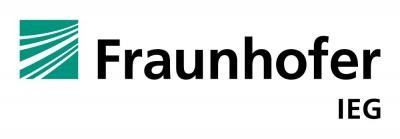
Bochum University of Applied Sciences (HBO)
Bochum University of Applied Sciences (HBO) is a university of applied sciences in the Ruhr region. Recent scientific projects at HBO focused on advancing digital rock physics (DRP) with coupled segmentation processes and numerical methods. HBO provides expertise in segmentation of X-ray computed tomography data and wave propagation modeling, simulations of coupled processes, as well as long-term experience in reservoir geophysics.

GFZ-Helmholtz Centre Potsdam (GFZ)
The GFZ is a member of the Helmholtz Association of National Research Centers. GFZ is a public law foundation and Germany’s premier geosciences institute. GFZ is responsible for assessing seismic hazard in Germany and is a leading participant in many seismic hazard and risk assessments in Europe and worldwide. GFZ has extensive experience in creating and validating ground motion models based on observations and offers access to state-of-the-art tools for this purpose in the form of eGSIM (https://egsim.gfz-potsdam.de). As part of the EU project RISE, GFZ has developed open-source software based on the established OpenQuake engine to calculate damage and losses due to earthquake sequences.

DMT GmbH & Co. KG (DMT)
DMT KG is a globally active company for engineering services and consulting with 280 years of experience. The expert body for vibration measurements at DMT, a subsidiary of the TÜV NORD Group, is a service provider in seismic monitoring. DMT is also approved in accordance with the Federal Immission Control Act (BImSchG). DMT operates more than 200 stations to document vibrations and earthquakes related to natural oil & gas production, mining, and deep geothermal energy production.
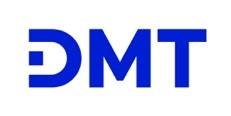
Istituto Nazionale di Geofisica e Vulcanologia (INGV)
The Istituto Nazionale di Geofisica e Vulcanologia (INGV) is a Public Research Body (EPR) established in 1990 under the control of the Ministry of University and Research (MUR). With more than 800 researchers and technicians, INGV's primary mission is to monitor the dynamics of the planet Earth in its fluid and solid components, thus contributing to the mitigation of related risks. INGV oversees the seismic and volcanic surveillance across the Italian territory and acts as the oversight agency for monitoring of geo-resource exploitation (oil & gas, geothermics, carbon capture & storage) in Italy.

Università di Trento (UNITN)
The University of Trento (UNITN) is an Italian research-driven institution, excelling in the Department of Civil, Environmental, and Mechanical Engineering. Renowned for its top national rankings, the department hosts multiple winners of the European Research Council (ERC) awards. An international excellence within the department lies in the specialized research on risk, safety, and uncertainty quantification. This center extends its influence across various domains, including earthquake engineering, hydrology, and geomechanics, showcasing the university’s commitment to cutting-edge research in critical areas.

SEISMIX s.r.l.
SEISMIX is a spin-off of the University of Pisa providing services for seismic monitoring operations, ranging from design to the real-time data analysis and seismicity interpretation. SEISMIX currently offers real-time microseismic monitoring services for different companies working in the geo-energy sector, including SNAM, TotalEnergies, Edison, and ENI.
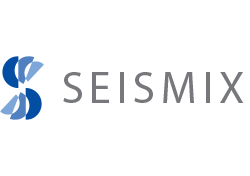
School and Observatory of Earth Sciences (EOST, University of Strasbourg and French National Center for Scientific Research CNRS)
The Ecole et Observatoire des Sciences de la Terre (EOST) hosts the Interdisciplinary Thematic Institute - Geosciences for the Energy System Transition (ITI GeoT) which addresses the role of deep groundwater as a key tool for renewable georesource production. EOST runs various technical services, including a group of experts in seismological instrumentation as well as the central site of the BCSF-RéNaSS national observation service in charge of monitoring the metropolitan seismic activity and is involved in the institutional monitoring of seismicity induced by deep geothermal activities.
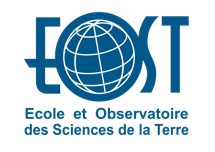
Dublin Institute for Advanced Studies (DIAS)
The Dublin Institute for Advanced Studies (DIAS) is a statutory corporation established in 1940 under the Institute for Advanced Studies Act of that year. It is an Irish government publicly funded independent academic center for research in basic disciplines. The Institute has over 100 academic, research and support staff (about 45 in Geophysics) across three sites in Dublin city. DIAS Geophysics Section has subsections comprising theoretical, numerical and observational activities. It also runs the Irish National Seismic Network and, relevant to GEOTWINS, has played key roles/coordinator in multiple EU and national projects on microseismicity characterization, seismic imagery, and fluid-rock interactions such as COSEISMIQ-Geothermica, GeoURBAN-Geothermica, DEEP-Geothermica, and De-risking Ireland’s Geothermal energy potential (DIG) projects.

VITO N.V.
VITO is a leading European independent research organization in the areas of clean-tech and sustainable development with expertise in resource mapping, new exploration techniques and processing sequences, innovative ways of heat extraction, induced seismicity, and the integration of geothermal energy in industrial processes and district heating. Since 2019, VITO operates a deep geothermal plant at the Balmatt industrial site in Mol (Belgium).

Earth Observatory of Singapore (EOS)
The Earth Observatory of Singapore (EOS) conducts critical research on earthquakes, volcanic eruptions, tsunamis, and climate change in Southeast Asia to promote safer, more sustainable societies. A key focus is addressing challenges in geoenergy exploration and sustainability, aligning with Singapore's Green Plan priorities. Among its recent activities is the Integrating Volcano and Earthquake Science and Technology (InVEST) project. InVEST, which aims to improve regional understanding of tectonic hazards and their societal impacts.
